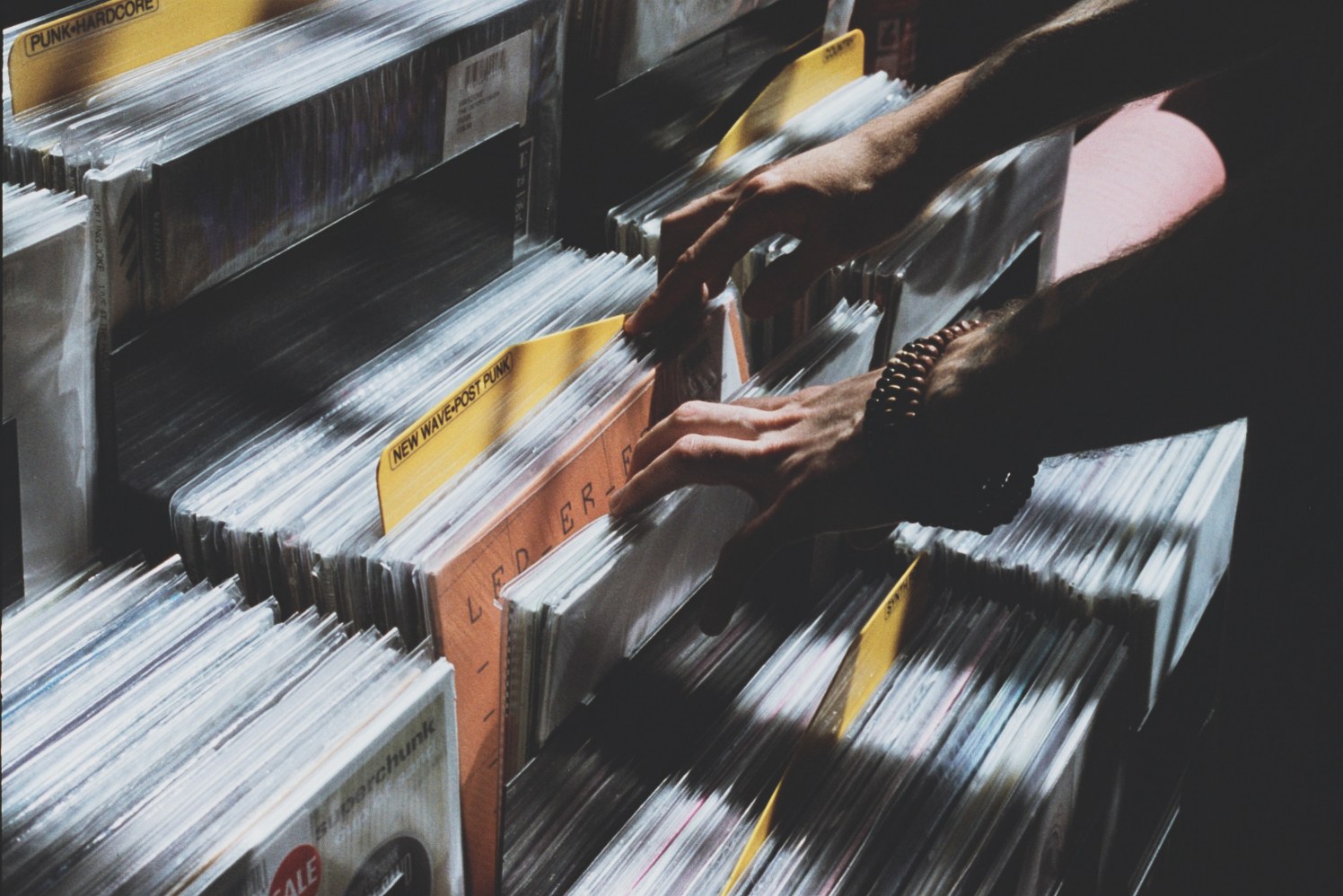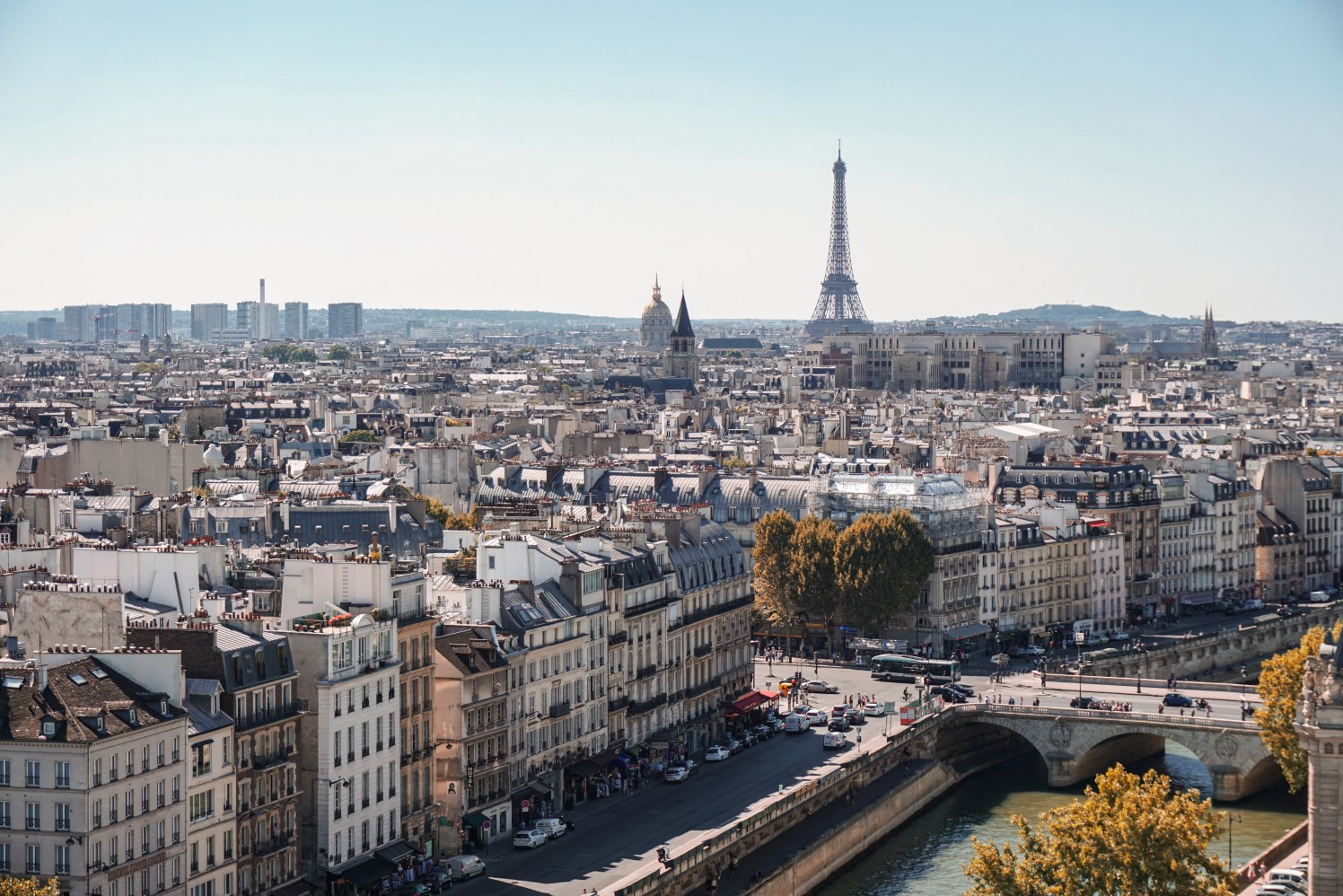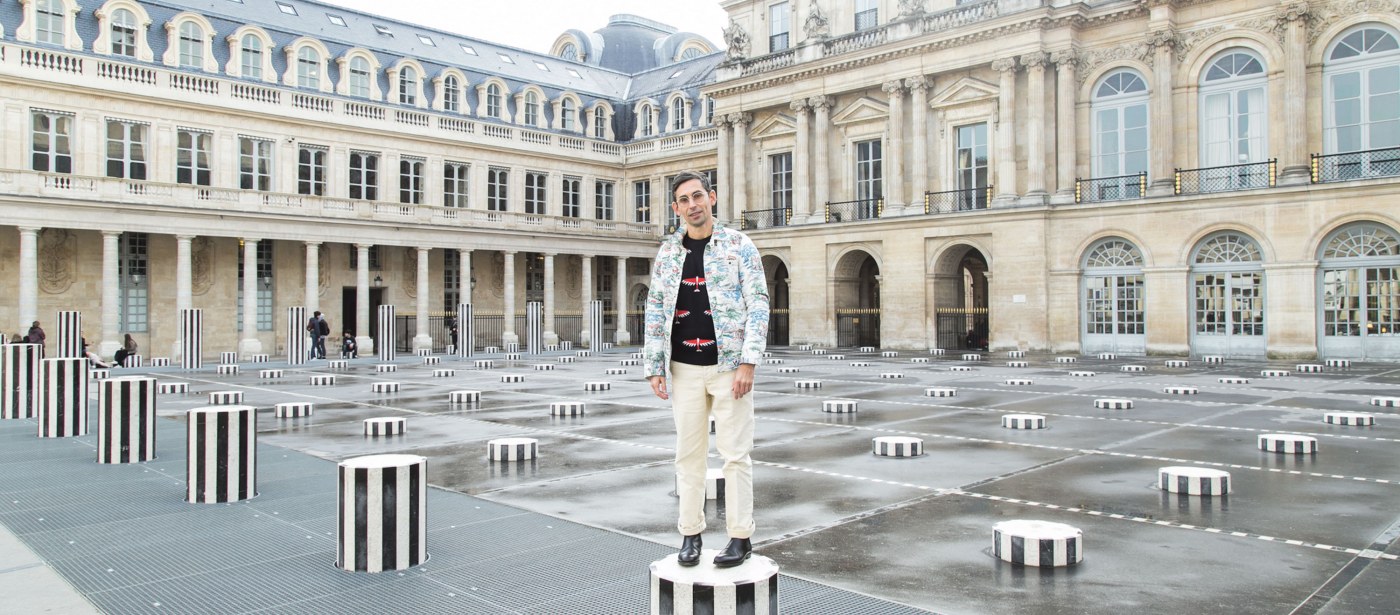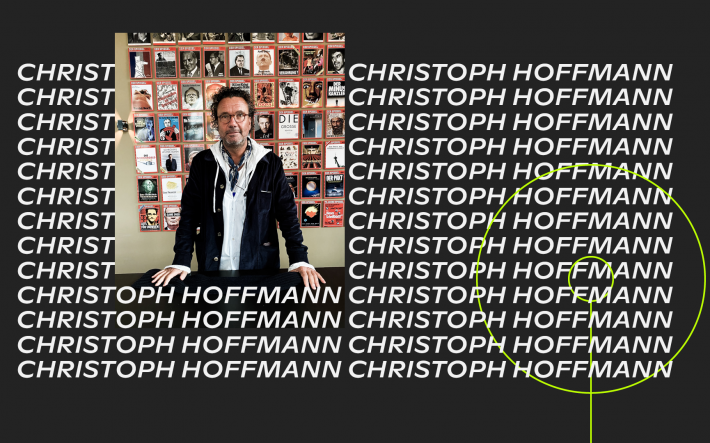Creating a Cult Label
It all started off with a modest music label and a few pairs of jeans. Since Maison Kitsuné’s origins in 2002, the purveyor of cool has spiralled out into a cult fashion brand and music label with coffee shops in Paris and Tokyo. How did it all come to be? Co-founder Gildas Loaëc shared with COMPANION how he seeks out the eclectic and the classic to stay fresh in these fast-moving industries.
At some point, all creatives face the same question: how do I make other people care about what I do? How can I communicate my excitement about my music, carpentry, needlework, or watercolours to others? While some artists may be content to produce their work in isolation, leaving matters of audience and exposure to posterity, many struggle with such prosaic issues at various stages in their career. ‘If you have an idea and execute it, that’s still only half the work,’ says Gildas Loaëc, autodidact and talent hunter. Gildas was the artistic director of French electronic duo Daft Punk during their early years, and in 2002 co-founded what would come to be the Kitsuné empire together with Japanese architect Masaya Kuroki. Since then, its three branches – Maison Kitsuné, the fashion brand; Kitsuné Musique, the music label; and Café Kitsuné, the coffee shops – have garnered a cult following the world over.‘Then you have to imagine how people are going to access it, or how you will move people with whatever it is that you have made. What is the story that you are going to put around it so that it touches people, so that they discover it and want to talk about it later with their friends?’Creating stories is precisely what Gildas excels at. He does not once use the word ‘branding’, though he likes to pepper his French with other buzzwords borrowed from English, like ‘organic’. The company he co-founded, Maison Kitsuné, embodies the kind of attention to detail that has defined most of Gildas’s career.
Maison Kitsuné’s headquarters are tucked away in a quiet side street off of the Grands Boulevards, one of the French capital’s main arteries and a landmark of leisure and luxury, with its wide sidewalks; slick, uniform facades; and wrap-around balconies. Gildas’s office is a modest room cluttered with canvases and memorabilia he swears he is trying to get rid of. On the coffee table, a glittery plastic effigy of a shitting Japanese dog. Leaning against the table, a concert poster for a fictitious event that never happened.
Mixing the eclectic with the traditional, and the unconventional with the established, seems to be Gildas’s specialty, and it’s equally what makes Maison Kitsuné stand out as a brand, ensuring its longevity. Born and raised in the westernmost tip of France, literally called ‘the end of the earth’ (Finisterre), Gildas is surprisingly shy for someone heading a company of 80-plus employees. Giving interviews is clearly not his favourite part of the job, as he cringes whenever asked a question and rarely finishes a sentence. The only time he stops shifting around in his chair is when he talks about his passion for music — as a high schooler, when he spent most of his time going to raves and producing a fanzine, and then as a 19 year old, when he opened a vinyl record store in Paris and started hanging out with DJs and skaters.

If you ask Gildas, most of his successes so far can be chalked up to serendipitous encounters: his record store is where he met the two French DJs who would later become Daft Punk and his business partner, Masaya Kuroki. ‘The idea — and perhaps it’s selfish in some ways — was just to have fun and do what we like to do with our days anyway: fashion, music, and style,’ Gildas says. Founded in 2002, Maison Kitsuné started off as a music label with a few pairs of jeans, cardigans, and shirts. As time passed, the brand grew to include a wider collection of clothing as well as DJ nights, online streaming, and cafés in both Paris and Tokyo. With its line of preppy blazers, shirts, and knitwear, the fashion label plays off of the classic Parisian look: elegant minimalism and neutral basics. But for Gildas, it’s important not to rest too heavily on any laurels.

‘We play on references from the late 60s and early 70s. We like to take a film or a reference but then make it relevant to today. We’re not into doing strict replicas, but somehow giving things a twist so they stay fresh,’ Gildas says of the general aesthetic guidelines for the brand. Staying fresh is one of his obsessions. The 46-year-old father of two never bothered going to university, because he didn’t have the patience for it. In a market where French fashion is dominated by large, established groups and smaller brands are often founded by business school graduates, this makes him stand out considerably.
‘I have a clear opinion on many things without anyone telling me what I should think,’ he says. ‘I think I’m able to define fairly fast what makes something good — that is, what makes sense and what can move a lot of people.’ While his co-founder Masaya heads up business operations in Asia, Gildas’s intuition has led him to seek out young musicians like the Australian band Parcels, collaborate with street artists like Andre, and develop a line of Kitsuné cafés. One of them is in the Palais Royal, fronted by a summer terrace that leads into the palace grounds. Gildas likes to take visitors in through an unassuming backdoor to watch their astonishment as they discover the royal pomp on the other side. ‘The Palais Royal [has] the most beautiful gardens in Paris. And it is said that Paris is the most beautiful city in the world, so here we are in the most beautiful gardens in the world,’ he says, barely concealing his glee.

This seems to be the secret to Maison Kitsuné’s success as a whole: taking risks, but also mixing the traditional with the new, and, in doing so, appealing to a wider audience. ‘If there’s one thing I had to pick that we’re proud of, it’s that through our various activities, we’ve been able to touch a very diverse range of people. Without trying too hard, we speak to people between the ages of 15 and 65, whether they’re streaming our music or buying clothes at a chic department store or getting a coffee.’It’s clear when speaking to Gildas that music is not a marketing add-on to promote clothing; neither are the fashion items a spin-off of the music, and the cafes are also their own beast. ‘To do things well, you need to do things one at a time,’ Gildas offers in a way of advice. ‘I learn about new things every day.’ Given his wide range of interests, this hardly comes as a surprise.
Find the Rhythm of Paris

Parisian sunsets are best enjoyed on a terrace, aperitif in hand. One of the best spots to take in the last rays to the tune of (free) open-air concerts is Moncoeur Belleville, a hip restaurant and bar offering sweeping views over the city.
Opéra de Paris – Palais Garnier
For an opulent night out, it’s hard to beat the splendour of Palais Garnier, which blends elements of Baroque, Palladio, and Renaissance architecture. The programme, which supplements the classics (Mozart, Verdi) with more experimental contemporary pieces, ensures there’s something on offer for all tastes.
Some clichés were made to be embraced. Like pilgrimages to lay roses on the grave of an idol.At Paris’s most prestigious (and greenest) cemetery, Père Lachaise, you’ll find the graves of Frédéric Chopin, Édith Piaf, and Jim Morrison — to name just a few.
Soul, disco, jazz, gospel — at the cult Pigalle cocktail bar L’Entrée des Artistes (The Artists’ Entrance), the soundtrack is taken as seriously as the well-shaken drinks. A top-notch lineup of DJs spinning an eclectic mix of tracks sets an upbeat tone for the night.
Ready to let loose a little? From Tuesday through Saturday from 11pm, David Lynch’s cult members’ club, Silencio, opens its doors to the public for club nights dedicated to hip-hop, electro, and disco. Rub shoulders with the who’s who of Paris as you get down on the dance floor.







